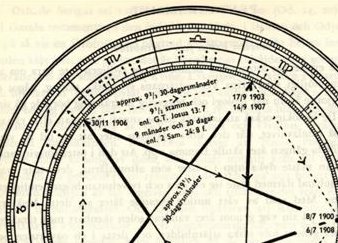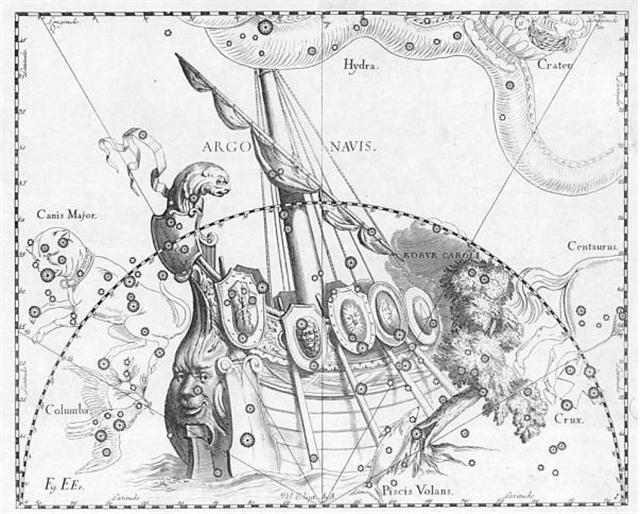221. In the pentagram illustration there are references to the Old Testament, viz. to Josua 13:7 and to 2 Samuel 24:8.
Anciently (a hundred years ago) they would instantly have known, I suppose, what had been written at this pair of places, but I am the result of a modern upbringing and I am ignorant. I had to look it up in my dusty old Bible. The reference to 2 Samuel 24:8 is fairly easy to understand, it simply says that after having gone through the whole of the land they returned to Jerusalem after 9 months and 20 days. 9 * 30 + 20 = 290 (→ 10 * Hermes Trismegisthos, Mercury). ... The author of the Book of Enoch in his treatise on astronomy and the calendar also reckoned a year to be 364 days, though he pronounced a curse on all who did not reckon a month to be 30 days long ... The reference to Josua 13:7 is not so self-evident, it has to do with how the land already at an early time was divided between the 9 tribes and one of the halves of the tribe of Manasseh. Here my mind is blank (tabula rasa) and I can therefore scribble numbers: 13 * 7 = 91. In which case I could also write 2248 (→ 22(0) and 48. ... Anciently zero was not yet a part of counting, which meant 220 would have been written (ceteris paribus) as 22 (→ September 22, 265, equinox) ... ... According to a variety of sources of the legend, the Argo was said to have been planned or constructed with the help of Athena. According to other legends it contained in its prow a magical piece of timber from the sacred forest of Dodona, which could speak and render prophecies. Argo Navis is the only one of the 48 constellations listed by the 2nd century astronomer Ptolemy that is no longer officially recognised as a constellation. It was unwieldy due to its enormous size: were it still considered a single constellation, it would be the largest of all. In 1752, the French astronomer Nicolas Louis de Lacaille subdivided it into Carina (the keel, or the hull, of the ship), Puppis (the poop deck), and Vela (the sails). When Argo Navis was split, its Bayer designations were also split. Carina has the α, β and ε, Vela has γ and δ, Puppis has ζ, and so on. The constellation Pyxis (the mariner's compass) occupies an area which in antiquity was considered part of Argo's mast (called Malus). However, Pyxis is not now considered part of Argo Navis, and its Bayer designations are separate from those of Carina, Puppis and Vela ...
But who was Manasseh? From my early childhood I can recall that he was just little one and at the final of a long sequence of strong spirits. Which by no means was good.
|


